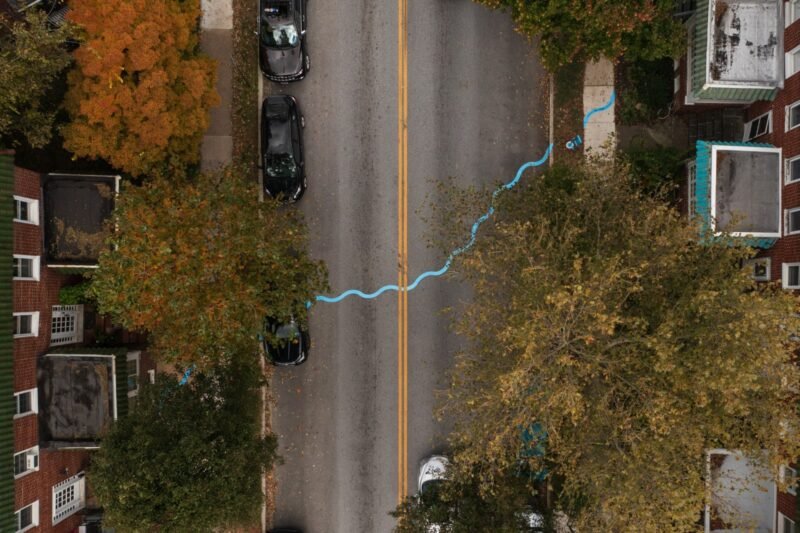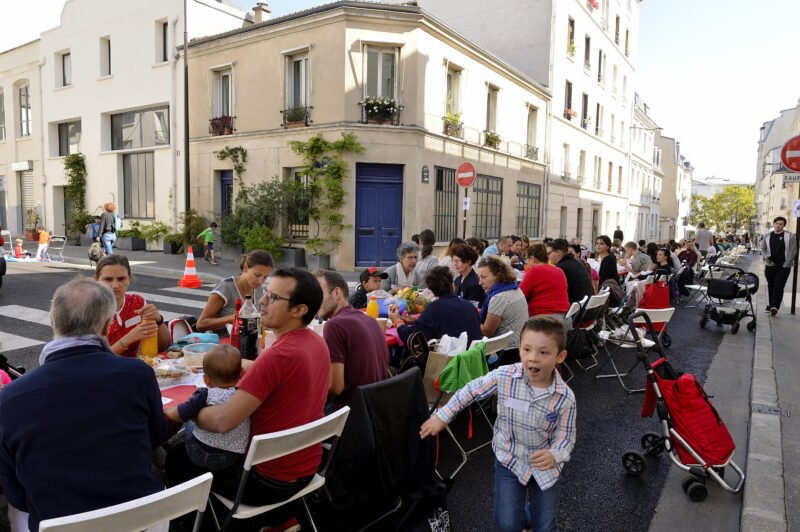Architectural Ice Cream On Wheels

Yesterday NOTCOT talked about the Coolhaus Ice Cream Truck that dropped by during the Architizer launch party at the A+D Museum in Los Angeles. The truck is a converted postal van with chrome rims, a pink top, and a fold-down bar and tableto. The Coolhaus truck is happily driven by architects, designers, developers, artists, bakers, actors, writers, musicians and people from other walks of life, and these people claim to serve ‘architecturally inspired ice cream sandwiches’ (notice the picture of ‘Rem Coolhaus’ below). Nevertheless, the message behind the ice cream truck is a bigger one.
“A Coolhaus is also a thinker, a thinker about reclaiming public and urban space for eating and gathering, when and where it is least expected, or when it is invited to share its decadent treats with interested eaters. A Coolhaus is an innovator about how to reinvent or redesign food with epicurian sensibility but also with a search for sustainability and minimal waste. A Coolhaus is passionate about food, where it comes from, how it is made, and how it is given to the eater. A Coolhaus has a curiosity for the day-to-day gastro-experience and a devotion to the public for social merriment.”

Their public space mission is an appealing one that refers to the claims of Jane Jacobs, as she states that “stores, bars and restaurants (…) give people (…) concrete reasons for using the sidewalks on which these enterprises face. Second, they draw people along the sidewalks past places which have no attractions to public use in themselves but which become traveled and peopled as routes to somewhere else”. Furthermore, “the activity generated by people on errands, or people aiming for food or drink, is itself an attraction to still other people”. Many city planners and architects still seem to go completely beyond this and forget that prominence should be given to the soft side of urbanism rather than the physical constellation of a city. It’s not about how a city looks, it’s about how it feels.
With all kinds of similar initiatives being carried out, moveable food concepts seem to be a small trend in the city of Los Angeles. About a year ago I spent an article on Kogi Korean BBQ, a popular flexible taco restaurant that makes use of a Twitter channel to inform customers about its current location in the city. Currently Los Angeles is unfolding plans to open a mobile food court in the city center where flexible retailers can gather. One of the people behind this project is Matt Geller, Vice President of SoCal Mobile Food Vendors Association and the brains behind the Santa Monica mobile food truck lot initiative, which was shut down within a day due to zoning issues. Another example of a mobile food initiative in LA is the World Fare Bustaurant, that aims to add “a needed twist to the oversaturated gourmet food truck scene”. (Extra: Brand X’s food trends of 2010.)

Of course, street vending is not a new phenomenon. Nevertheless, some mobile food concepts in the streets of Los Angeles attempt to build their brand by smart use of social media. Facebook and Twitter enable flexible and pop-up initiatives such as the Coolhaus Ice Cream Truck to instantly organize people in a physical way. Hundred years ago, it took ages for a restaurant to build a decent network of customers. In the pop-up era one Twitter message is enough to inform a big amount of customers within a few minutes, and to let a number of them drop by at the street corner. The future of urban planning is less in designing space itself, but rather in the organization of concentrations of people within highly flexibilized space.



